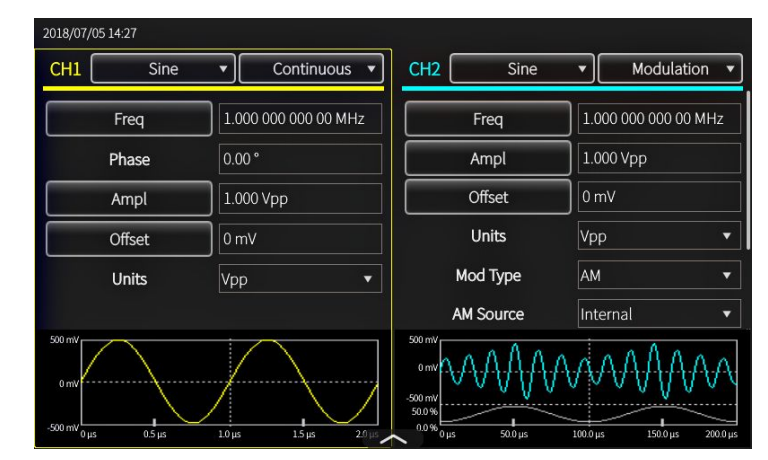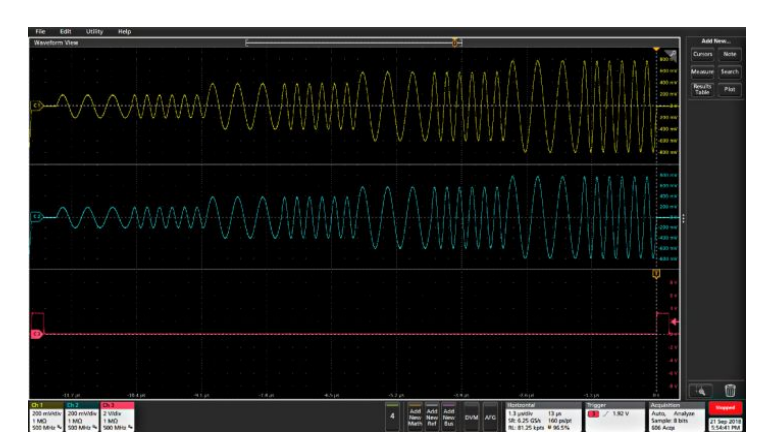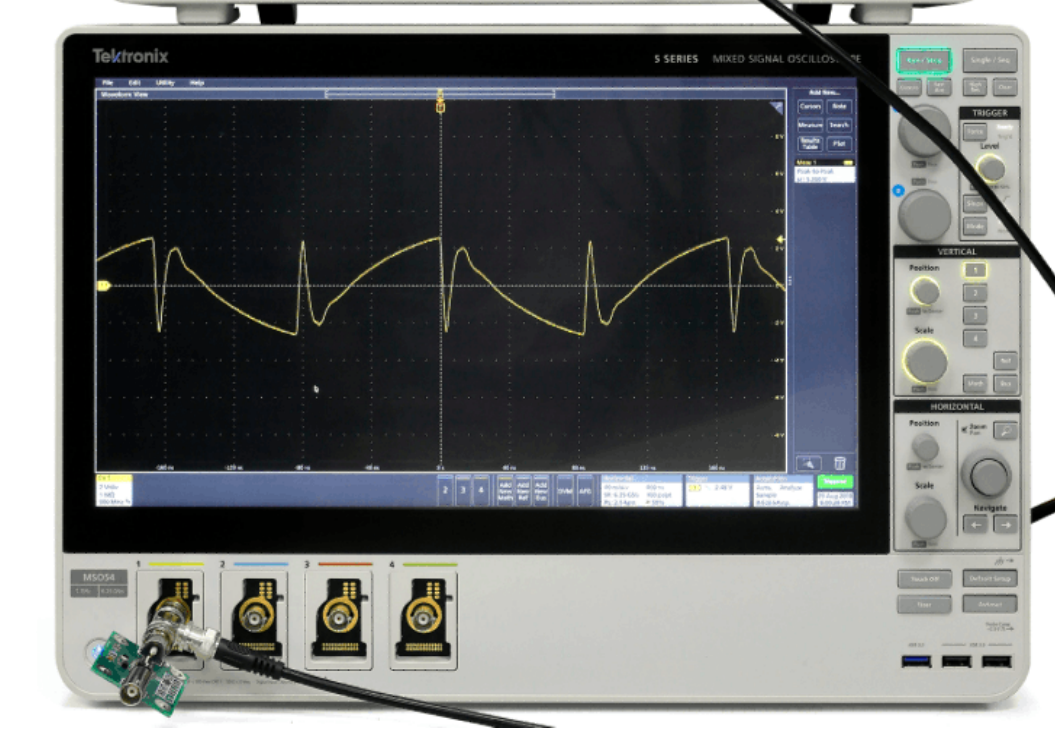Arbitrary Waveform Generator: Simulating Real-World Signals
In the field of electronic test and measurement, a signal source is a commonly used instrument that provides a variety of known or preset waveforms, such as sine, square, ramp, and pulse waves, for exciting a circuit or system under test and observing its response. However, sometimes we need to simulate real-world signals that are often irregular, random, complex, or contain multiple frequency components and modulations. At this point, traditional signal sources cannot meet our needs, and we need a more flexible and powerful signal source: the Arbitrary Waveform Generator.

What is an Arbitrary Waveform Generator?
An Arbitrary Waveform Generator (AWG) is a signal source capable of generating any desired waveform. It generates these waveforms using pre-stored digital data that describes the changing voltage of the signal. Typically, an arbitrary waveform generator produces customised waveforms that have been compiled rather than common waveforms that have been preset.
The user can create the desired arbitrary waveform by using the built-in editing tools, an external software application, or by directly importing an existing data file and storing it in the arbitrary waveform generator's memory. Each data point represents a voltage value at a sampling moment.
The user can set the output parameters of the Arbitrary Waveform Generator, such as output frequency, amplitude, bias, phase, etc., and select the output modes, such as continuous mode, modulation mode, sweep mode, burst mode, etc.
When the user starts the output, the Arbitrary Waveform Generator will read the data points from the memory according to the set sampling rate and convert them into analogue signals for output through the digital-to-analogue converter (DAC). If the user selects Loop Output or Sequence Output, the Arbitrary Waveform Generator will read the data points in the memory repeatedly or read different data points in the set order.

What are the advantages of an arbitrary waveform generator?
Arbitrary waveform generators have several advantages over traditional signal sources:
- Flexibility: Arbitrary Waveform Generator can generate any desired waveform, whether periodic or non-periodic, deterministic or random, simple or complex. Users can design and edit the signals they want according to their needs, and modify and update them at any time.
- Fidelity: Arbitrary waveform generators guarantee a high degree of consistency between the output signal and the input data points, i.e. what you see is what you get. Arbitrary waveform generators usually have high sampling rate, resolution and memory depth, as well as low noise and distortion, thus ensuring that the output signal is of high quality and accuracy.
- Functionality: In addition to generating basic continuous outputs, arbitrary waveform generators can also provide a variety of advanced output modes, such as modulation, scanning, burst, sequence, etc., as well as a variety of triggering and synchronisation methods, thus enabling more complex and flexible signal generation and control.
What are the applications of Arbitrary Waveform Generator?
Arbitrary waveform generators can be applied in many fields due to their flexibility, fidelity and functionality, such as:
- Communication: Arbitrary Waveform Generator can generate various communication signals, such as digital modulated signals, multi-carrier signals, Orthogonal Frequency Division Multiplexing (OFDM) signals, Pulse Code Modulation (PCM) signals, etc., and can simulate the characteristics of the channel, such as fading, interference, noise, etc., so as to carry out the design, testing and validation of communication systems.
- Radar: Arbitrary waveform generator can generate various radar signals, such as pulse compression signals, linear frequency modulation (LFM) signals, phase coding (PC) signals, binary phase shift keying (BPSK) signals, etc., and can simulate the characteristics of the target, such as distance, speed, azimuth, etc., so as to carry out the simulation, evaluation and optimisation of radar systems.
- Electronic Warfare: Arbitrary Waveform Generator can generate various electronic warfare signals, such as jamming signals, spoofing signals, noise signals, etc., and can simulate the characteristics of the enemy, such as radar types, operating modes, parameter settings, etc., so as to carry out the research, development, and countermeasures of electronic warfare systems.
- Others: Arbitrary waveform generators can also be applied in other fields, such as medicine, biology, physics, chemistry, etc. They are used to simulate various signals in human body or nature, such as electrocardiogram (ECG) signals, electroencephalogram (EEG) signals, sound signals, optical signals, etc., so as to carry out various experiments and measurements.

Arbitrary Waveform Generator is a signal source capable of generating any desired waveform with the advantages of flexibility, fidelity, and functionality, which can be used in several fields such as communications, radar, and electronic warfare. Arbitrary Waveform Generator is the best instrument to simulate real world signals.
In the field of electronic test and measurement, a signal source is a commonly used instrument that provides a variety of known or preset waveforms, such as sine, square, ramp, and pulse waves, for exciting a circuit or system under test and observing its response. However, sometimes we need to simulate real-world signals that are often irregular, random, complex, or contain multiple frequency components and modulations. At this point, traditional signal sources cannot meet our needs, and we need a more flexible and powerful signal source: the Arbitrary Waveform Generator.

What is an Arbitrary Waveform Generator?
An Arbitrary Waveform Generator (AWG) is a signal source capable of generating any desired waveform. It generates these waveforms using pre-stored digital data that describes the changing voltage of the signal. Typically, an arbitrary waveform generator produces customised waveforms that have been compiled rather than common waveforms that have been preset.
The user can create the desired arbitrary waveform by using the built-in editing tools, an external software application, or by directly importing an existing data file and storing it in the arbitrary waveform generator's memory. Each data point represents a voltage value at a sampling moment.
The user can set the output parameters of the Arbitrary Waveform Generator, such as output frequency, amplitude, bias, phase, etc., and select the output modes, such as continuous mode, modulation mode, sweep mode, burst mode, etc.
When the user starts the output, the Arbitrary Waveform Generator will read the data points from the memory according to the set sampling rate and convert them into analogue signals for output through the digital-to-analogue converter (DAC). If the user selects Loop Output or Sequence Output, the Arbitrary Waveform Generator will read the data points in the memory repeatedly or read different data points in the set order.

What are the advantages of an arbitrary waveform generator?
Arbitrary waveform generators have several advantages over traditional signal sources:
- Flexibility: Arbitrary Waveform Generator can generate any desired waveform, whether periodic or non-periodic, deterministic or random, simple or complex. Users can design and edit the signals they want according to their needs, and modify and update them at any time.
- Fidelity: Arbitrary waveform generators guarantee a high degree of consistency between the output signal and the input data points, i.e. what you see is what you get. Arbitrary waveform generators usually have high sampling rate, resolution and memory depth, as well as low noise and distortion, thus ensuring that the output signal is of high quality and accuracy.
- Functionality: In addition to generating basic continuous outputs, arbitrary waveform generators can also provide a variety of advanced output modes, such as modulation, scanning, burst, sequence, etc., as well as a variety of triggering and synchronisation methods, thus enabling more complex and flexible signal generation and control.
What are the applications of Arbitrary Waveform Generator?
Arbitrary waveform generators can be applied in many fields due to their flexibility, fidelity and functionality, such as:
- Communication: Arbitrary Waveform Generator can generate various communication signals, such as digital modulated signals, multi-carrier signals, Orthogonal Frequency Division Multiplexing (OFDM) signals, Pulse Code Modulation (PCM) signals, etc., and can simulate the characteristics of the channel, such as fading, interference, noise, etc., so as to carry out the design, testing and validation of communication systems.
- Radar: Arbitrary waveform generator can generate various radar signals, such as pulse compression signals, linear frequency modulation (LFM) signals, phase coding (PC) signals, binary phase shift keying (BPSK) signals, etc., and can simulate the characteristics of the target, such as distance, speed, azimuth, etc., so as to carry out the simulation, evaluation and optimisation of radar systems.
- Electronic Warfare: Arbitrary Waveform Generator can generate various electronic warfare signals, such as jamming signals, spoofing signals, noise signals, etc., and can simulate the characteristics of the enemy, such as radar types, operating modes, parameter settings, etc., so as to carry out the research, development, and countermeasures of electronic warfare systems.
- Others: Arbitrary waveform generators can also be applied in other fields, such as medicine, biology, physics, chemistry, etc. They are used to simulate various signals in human body or nature, such as electrocardiogram (ECG) signals, electroencephalogram (EEG) signals, sound signals, optical signals, etc., so as to carry out various experiments and measurements.

Arbitrary Waveform Generator is a signal source capable of generating any desired waveform with the advantages of flexibility, fidelity, and functionality, which can be used in several fields such as communications, radar, and electronic warfare. Arbitrary Waveform Generator is the best instrument to simulate real world signals.







